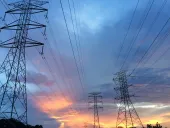
India coal power project economics and market outlook
By Adrian JohnIn spite of current market conditions in India, favourable project economics are set to support coal power as the default baseload capacity option with over $154 billion capex expected between 2012 and 2020
Since market restructuring that principally began with the Electricity Act 2003, India’s power capacity has grown at a strong CAGR of 6.8% – growing from 130GW to 220GW at year-end 2011.
During this period coal power capacity has grown at a CAGR of 6.4% – from 65GW in 2003 to 107GW at year-end 2011. However, with insufficient generation capacity, a history of project delays and missed government capacity additions targets, as well as severe problems with the transmission and distribution networks, India’s power market faces many challenges that must be addressed to ensure that economic growth is not unduly impeded.
As part of its broader energy security policy, the Government of India is seeking to develop a more balanced energy mix through support for nuclear, gas, hydro, wind and solar power – something designed to reduce an overreliance on coal.
However, as this article discusses, this is likely to prove to be a difficult proposition; and in the medium-term coal power project developments are expected to become increasingly widespread and to the detriment of investment in alternative baseload options of gas, hydro and nuclear.
Favourable Coal Power Project Economics Support Positive Outlook
Levelised Cost of Energy (LCOE) and Tariff Comparisons for Major Technology Options
Note: The LCOE calculations are based on a 20-year operating period and utilise a 10% discount rate. It is also important to note that the fuel prices used for these calculations are based on domestic prices in India, with the additional fuel costs at international prices shown as a separate category.y.
Coal power has long since been the dominant baseload power source and default technology choice for capacity expansion in India; but slow development of domestic coal resources, rising domestic and international coal prices, government tariff policy, supply chain capacity constraints and the bankability of PPA agreements (among other things) are presenting significant hurdles to timely project execution. Nonetheless, from the perspective of underlying project economics, coal power continues to be India’s cheapest busload capacity option for the foreseeable future. In fact a recent independent market study (the India Coal Power Market Analysis & Forecast 2012-2020) by energy business advisors John Loffman Research forecasts in excess of $154 billion to be spent on coal power projects in India between 2012 and 2020.
The chart above illustrates the major issues facing coal project financing and demonstrates the fact that coal power remains a more cost effective source of electricity relative to other technology options. Although actual project economics can vary greatly from project to project depending on a range of factors, the typical values presented in the chart above help to demonstrate the difficulty facing India’s power sector, in general, and coal power market, in particular. That is to say, power projects are becoming increasingly expensive to develop, while tariff level increases to reflect this have been less forthcoming owing to policies designed to protect the interests of poorer electricity consumers.
Supercritical 800MW coal technology currently offers the most economical option with an LCOE value of $69/MWh, which is somewhat cheaper than 600MW supercritical coal technology from China which has an LCOE value of $76/MWh. Meanwhile the commonly used domestic 500MW subcritical technology coal projects have an LCOE of $87/MWh. However, it is certainly worth noting that when international coal prices are utilised for these calculations, the LCOEs for these three technology types is $90/MWh, $98/MWh and $109/MWh respectively. For comparison gas power options typically have an LCOE of around $84/MWh at domestic gas prices and $102/MWh at international prices; while both nuclear and hydro are typically around $100/MWh. Although the $220/MWh LCOE for the proposed Areva EPR 1,700MW units to be built in Jaitapur (Maharashtra) is also noteworthy as it illustrates both the potential for large variation in individual project LCOEs, as well as the willingness for the Indian authorities to support the right projects almost regardless of costs.
Nonetheless, it is natural that with the LCOEs of technologies such as nuclear and hydro power converging with coal (at international coal prices), as well as the Indian Government’s desire to develop a more diversified energy mix, that such alternative power options would receive greater interest. This, however, is not currently the case as these other baseload power options face their own considerable issues for project development. Nuclear and large-scale hydro projects are facing increasingly vociferous public opposition, which is leading to significant project delays and cancellations; gas power projects are suffering from even worse fuel supply issues than coal – with insufficient domestic production, slow development of gas pipelines and LNG infrastructure, and high international gas prices all affecting gas power project developments. Furthermore, intermittent non-baseload wind and solar power projects, that are expected to reduce over-reliance on coal, are finding project financing (i.e. bankability of PPAs) and insufficient government support (e.g. through tax breaks and feed-in tariffs) to be significant hurdles for project execution. Consequently, all of this, in addition to the superior LCOE calculations, supports the strong view of coal remaining India’s default option for capacity additions for the foreseeable future.
So, with access to domestic fuel supplies, coal power projects have considerably lower LCOEs than all other competing technology types, but when international coal prices are considered the economics of such projects clearly deteriorates significantly. This is made all the more obvious when typical on-grid tariff rates are considered.
Although in most cases on-grid tariff rates will be set to ensure a rate of return on investment that will support growth in the power sector (typically around 15.5%), Ultra-Mega Power Projects (UMPPs) that have been won on a competitive bid basis encounter a different and difficult problem. UMPPs are central to India’s plans to increase total installed capacity in large blocks. However, with PPAs set by the bidding process and no mechanisms currently in place to account for international coal price rises, the economics of such projects can become greatly undermined. A good example of this is Tata Power’s Mundra UMPP which has a contracted tariff of Rs 2.26/kWh, which is now viewed as economically unviable after the Indonesian government raised the price of coal exports that the Mundra UMPP intends to use. However, the CEA has supported state utilities resistance to Tata Power being able to increase its tariff on the basis that it would undermine the competitive bidding process.
In fact, the issue of insufficient tariff levels, coupled with high fuel prices, has affected the execution of a multitude of proposed projects, with many either being put on-hold or cancelled altogether. But recent decisions by a number of State Electricity Regulatory Commissions (SERCs) to raise tariff rates by between 12% and 37% will no doubt help to improve the viability of many proposed coal power projects, as their required tariff levels become more attainable within such an improved tariff structure. Nonetheless, further and more structured tariff reforms will be required sooner rather than later in order to ensure that a stable investment environment is in place to support large-scale private investment and project financing throughout the power industry.
Adrian John, John Loffman Research
John Loffman Research is an independent, employee-owned energy business advisory company specialising in the provision of business strategy, commercial & market due diligence, transaction support, and bespoke research and analysis services for global energy markets. Focussing on the power and oil & gas sectors, the company has extensive experience in geographic areas worldwide, working on upstream, midstream, and downstream related projects.
India Coal Power Market Analysis & Forecast 2012-2020 provides complete market coverage, breakdowns and analysis of commercial and policy related developments and dynamics, project economics and opportunities and issues within India’s coal power supply chain over the next 9 years (2012-2020).
https://www.johnloffman.com/market-studies/india-coal-power-market-analysis-forecast-2012-2020




















 Advertise
Advertise






